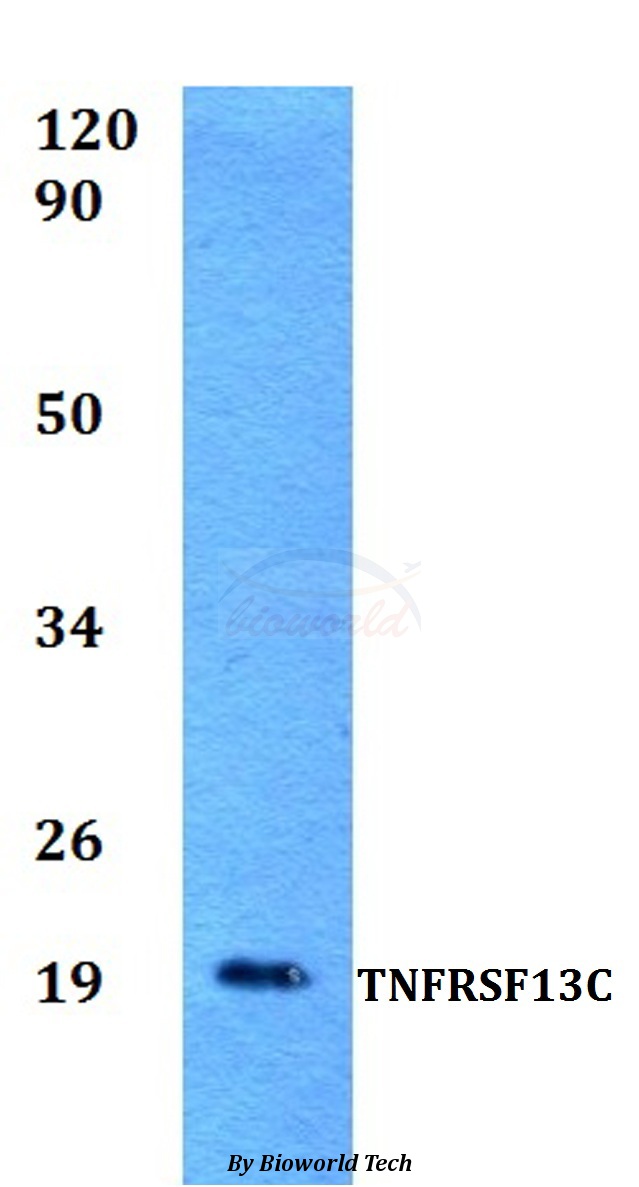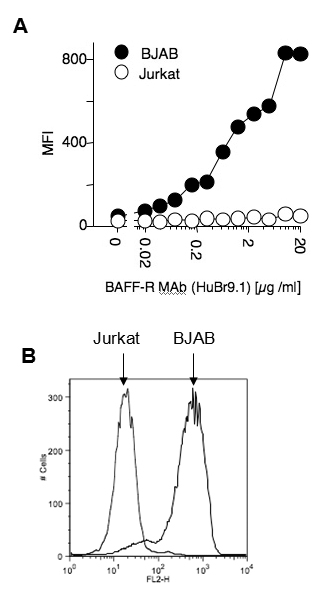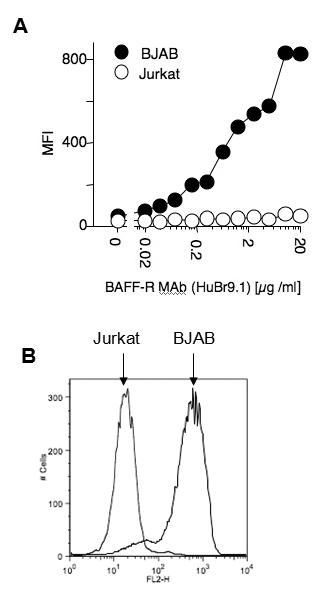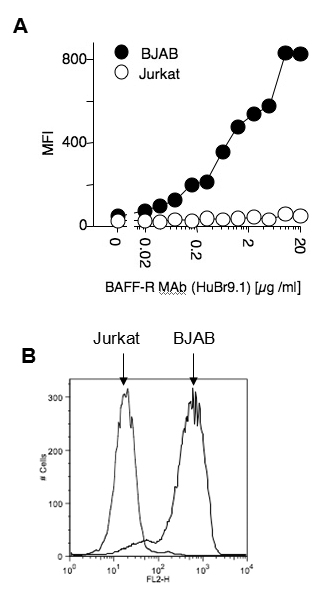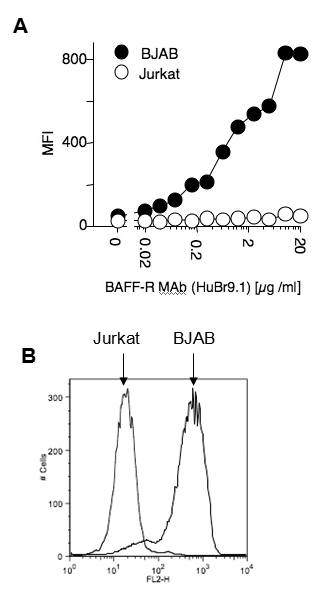
Detection of endogenous human BAFF-R with anti-BAFF-R (human), mAb (HuBR9.1) (AG-20B-0016). BJAB and Jurkat cells were stained with A) 20 microg /ml (and 2-fold dilutions) and B) 2microg /ml of anti-BAFF-R (human), mAb (HuBR9.1) in 50 microl FACS buffe
anti-BAFF-R (human), mAb (HuBR9.1) (ATTO 488)
AG-20B-0016TD
ApplicationsFlow Cytometry
Product group Antibodies
ReactivityHuman
TargetTNFRSF13C
Overview
- SupplierAdipoGen Life Sciences
- Product Nameanti-BAFF-R (human), mAb (HuBR9.1) (ATTO 488)
- Delivery Days Customer10
- ApplicationsFlow Cytometry
- CertificationResearch Use Only
- ClonalityMonoclonal
- Clone IDHuBR9.1
- Concentration1 mg/ml
- ConjugateAtto 488
- Estimated Purity>95%
- Gene ID115650
- Target nameTNFRSF13C
- Target descriptionTNF receptor superfamily member 13C
- Target synonymsBAFF-R, BAFFR, BROMIX, CD268, CVID4, prolixin, tumor necrosis factor receptor superfamily member 13C, B cell-activating factor receptor, BAFF receptor, BLyS receptor 3
- HostMouse
- IsotypeIgG1
- Protein IDQ5H8V1
- Protein NameBAFF receptor
- Scientific DescriptionMonoclonal Antibody. Recognizes human BAFF-R. Isotype: Mouse IgG1. Clone: HuBR9.1. Applications: FACS. Liquid. In PBS containing 0.02% sodium azide. Three receptors for BAFF were recently identified and designated TACI, BCMA and BAFF-R. BAFF-R signaling is essential for B cell development, survival and humoral immune responses. - Three receptors for BAFF were recently identified and designated TACI, BCMA and BAFF-R. BAFF-R signaling is essential for B cell development, survival and humoral immune responses.
- ReactivityHuman
- Storage Instruction2°C to 8°C
- UNSPSC12352203


